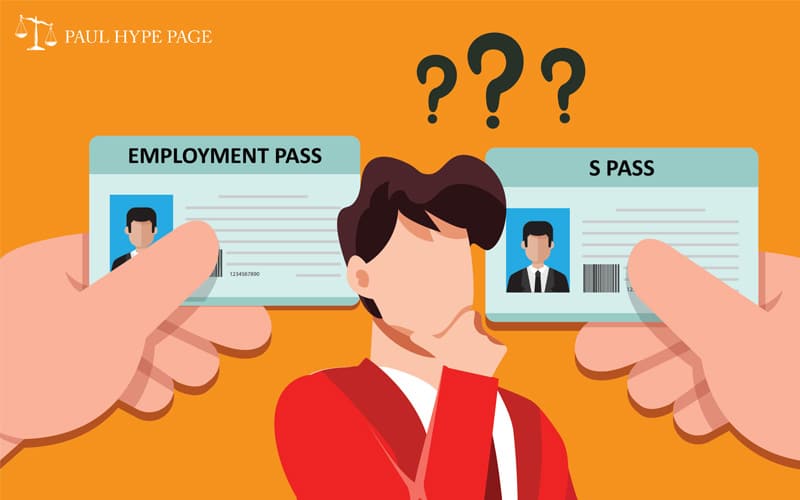In Singapore, a Work Permit is one of the most important documents for foreign employees who want to work legally. Issued by the Ministry of Manpower (MOM), the work permit allows foreign workers from approved countries to be employed in specific industries such as construction, marine, manufacturing, services, and domestic work.
But just as important as getting a work permit is knowing how and when to cancel it properly. Whether an employee has completed their contract, resigned, been dismissed, or is leaving Singapore permanently, the cancellation of the work permit is a critical process that both employers and employees must handle with care.
This guide provides a detailed look at work permit cancellation in Singapore—covering reasons, step-by-step procedures, responsibilities, consequences, and frequently asked questions. By the end, you’ll have a full understanding of how to stay compliant with MOM regulations and avoid potential penalties.
Why is Work Permit Cancellation in Singapore Important?
Cancelling a work permit is not just a formality—it is a legal requirement under Singapore’s employment laws. If the cancellation is not done on time, both the employer and the employee may face penalties.
For employers, failing to cancel means:
- Being held responsible if the worker overstays.
- MOM penalties or fines.
- Risk of losing eligibility to hire foreign workers in the future.
- For employees, not having their work permit cancelled properly means:
- Risk of overstaying beyond their legal stay.
- Immigration penalties, including fines or imprisonment.
- Possible bans on returning to Singapore for future employment.
In short, the cancellation process ensures that foreign employees exit Singapore legally and smoothly, while employers remain compliant with MOM regulations.
Common Reasons for Work Permit Cancellation
Work permits in Singapore must be cancelled for several reasons. The most common situations include:
1. End of Contract
When an employment contract ends and is not renewed, employers must cancel the work permit immediately. For example, if a worker was hired for a 2-year construction project, the permit must be cancelled as soon as the project ends and the worker is no longer employed.
2. Resignation by the Employee
If the employee resigns voluntarily, employers are still responsible for initiating the cancellation process once the worker completes exit procedures.
3. Termination or Dismissal
When an employee is dismissed (either due to misconduct or redundancy), the employer must cancel the work permit and ensure the worker leaves Singapore within the required timeframe.
4. Permanent Departure from Singapore
If a worker decides to leave Singapore permanently—whether to return to their home country or move elsewhere—the employer must cancel the work permit before their departure.
5. Transfer to a New Employer
If the employee wishes to work for another employer in Singapore, the existing employer must cancel the work permit first before the new employer can apply for a fresh one.
Regardless of the reason, MOM requires employers to take the lead in cancelling the permit.
Step-by-Step: How to Cancel a Work Permit in Singapore
The process is relatively simple but requires attention to detail. Here’s how employers can cancel a work permit:
Step 1: Prepare for Cancellation
- Confirm the employee’s last working day.
- Ensure the employee has either left Singapore or has a confirmed departure ticket.
- Settle all outstanding salary, overtime, and benefits.
- Pay any outstanding work levy to MOM.
Step 2: Log into WP Online
Employers must log in to MOM’s WP Online system using their CorpPass. This platform is where all applications, renewals, and cancellations of work permits are handled.
Step 3: Submit Cancellation Request
The employer must provide:
- Work Permit number.
- Reason for cancellation (end of contract, resignation, termination, etc.).
- Employee’s departure details (flight information if applicable).
Step 4: Return the Work Permit Card
Employers must return the physical Work Permit card to MOM either by mail or by dropping it off at designated collection points.
If the card is lost, employers must submit a declaration of loss.
Step 5: Processing by MOM
- MOM usually processes cancellations within 1–3 working days.
- Employers should download and keep a copy of the cancellation acknowledgement letter for records.
Note: If the employee is still in Singapore after cancellation, MOM may issue a Special Pass that allows the worker to remain for a short period before departure.
What Happens After Work Permit Cancellation?
Once MOM processes the cancellation, several things take place:
For Employers:
- Levy Refunds – Employers may be entitled to a refund for unused work levies, depending on when the cancellation takes place.
- Documentation – Employers must keep proper records of cancellation for future audits by MOM.
- Hiring New Workers – Employers can only apply for a replacement worker once the existing permit is cancelled.
For Employees:
Mandatory Departure – Employees must leave Singapore within 7 days of cancellation.
Final Settlement – They should receive their last salary, bonuses, and any other benefits before leaving.
Immigration Compliance – Employees must show the Special Pass (if issued) or cancellation acknowledgement to immigration officers when departing Singapore.
Consequences of Not Cancelling a Work Permit
Failure to cancel a work permit on time can result in serious penalties:
For Employers
- Fines from MOM for non-compliance.
- Loss of eligibility to hire foreign workers.
- Higher scrutiny during MOM audits.
For Employees
- Overstaying Penalties – Immigration fines, imprisonment, or both.
- Bans from Re-Entry – Blacklisting from future employment in Singapore.
- Legal Troubles – Being deemed as staying illegally in Singapore.
- Important Things to Remember When Cancelling a Work Permit
- Always cancel the permit before the employee’s departure from Singapore.
- Settle all salary and levy payments before submitting the cancellation.
- Return the Work Permit card to MOM without delay.
- Keep proper documentation for compliance and future reference
If unsure, employers can check MOM’s website or call the MOM hotline for guidance.
Case Example: Smooth Cancellation vs. Delayed Cancellation
Case 1: Smooth Cancellation – A domestic helper resigns after 2 years. The employer settles her wages, books her return ticket, cancels the work permit through WP Online, and returns the card. The worker leaves within 7 days—no issues for either party.
Case 2: Delayed Cancellation – A construction company forgets to cancel a worker’s permit after dismissal. The worker overstays for 2 weeks. MOM fines the employer for non-compliance and bans them from hiring foreign workers for 12 months. The employee also faces an immigration ban.
These examples highlight the importance of timely cancellations.
Conclusion
The cancellation of work permits in Singapore is a crucial process that ensures compliance with MOM regulations. Employers must initiate cancellations whenever an employee leaves, resigns, or is terminated. Employees, on the other hand, must ensure they leave Singapore on time after cancellation to avoid immigration penalties.
By carefully following MOM’s step-by-step guidelines, employers and workers can avoid legal issues, penalties, and future complications.
For further guidance, you can visit the MOM website on Work Permit Cancellation or consult with a licensed employment agency.
Frequently Asked Questions
You must cancel the work permit when an employee’s contract ends, if they voluntarily resign, or if they are dismissed. Additionally, if the employee is leaving Singapore permanently, their work permit must be canceled.
Failure to cancel the work permit on time can result in fines and penalties from the Ministry of Manpower (MOM). The employer may face scrutiny, and the employee could face immigration penalties for overstaying.
Once you submit the request to cancel the work permit, MOM usually processes it within 1-3 working days if all required documents are in order. However, this may take longer if additional documents are requested.
If the worker is still in Singapore beyond the work permit expiry date, you must ensure the employee leaves the country within the prescribed time frame. If they remain after the deadline, they could face fines or a ban from re-entering Singapore.
No, the employee cannot work while the work permit is being cancelled, unless they are granted a special pass. This pass allows the employee to stay legally in Singapore while the cancellation process is completed.
Share This Story, Choose Your Platform!
Related Business Articles





